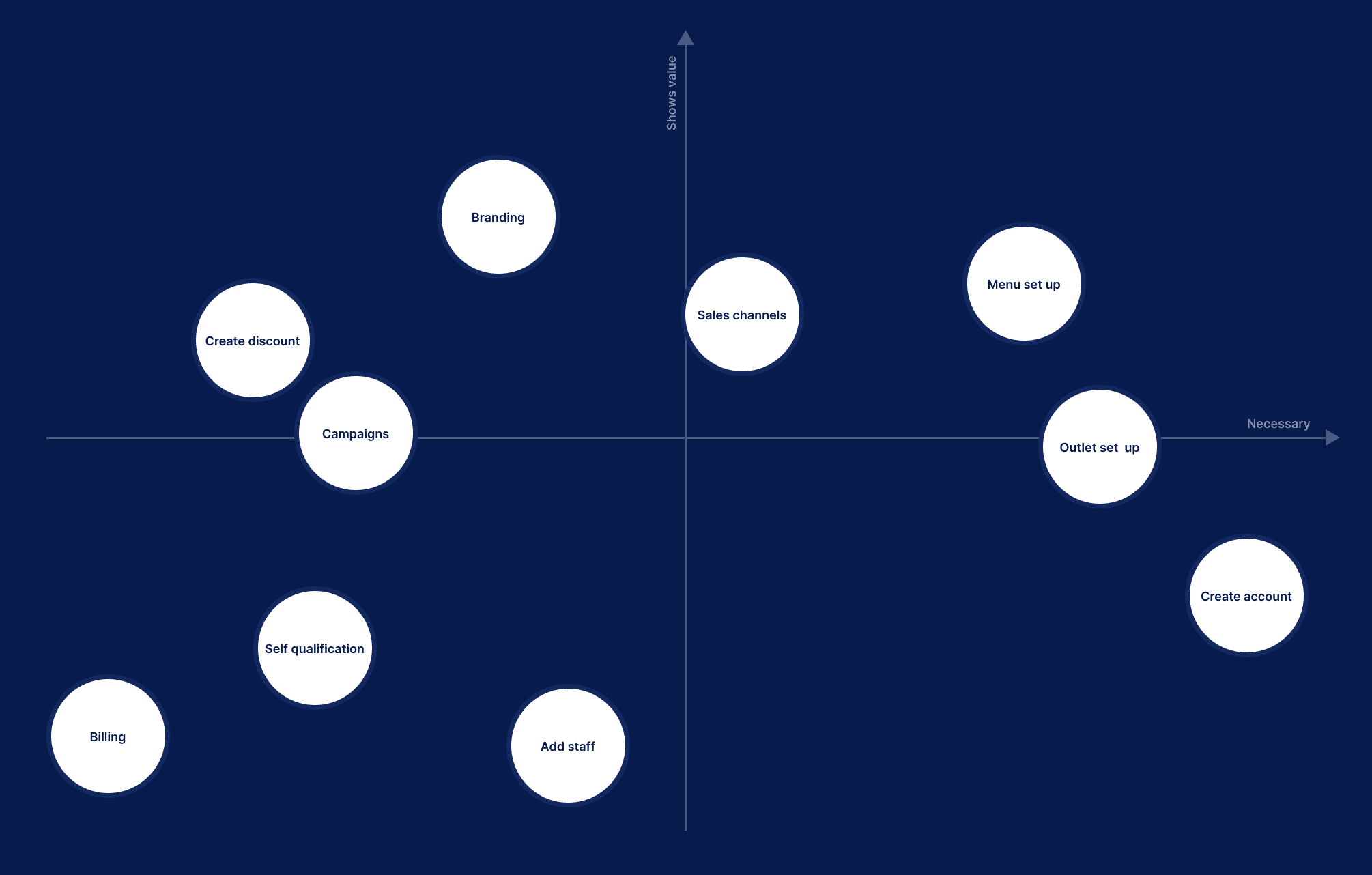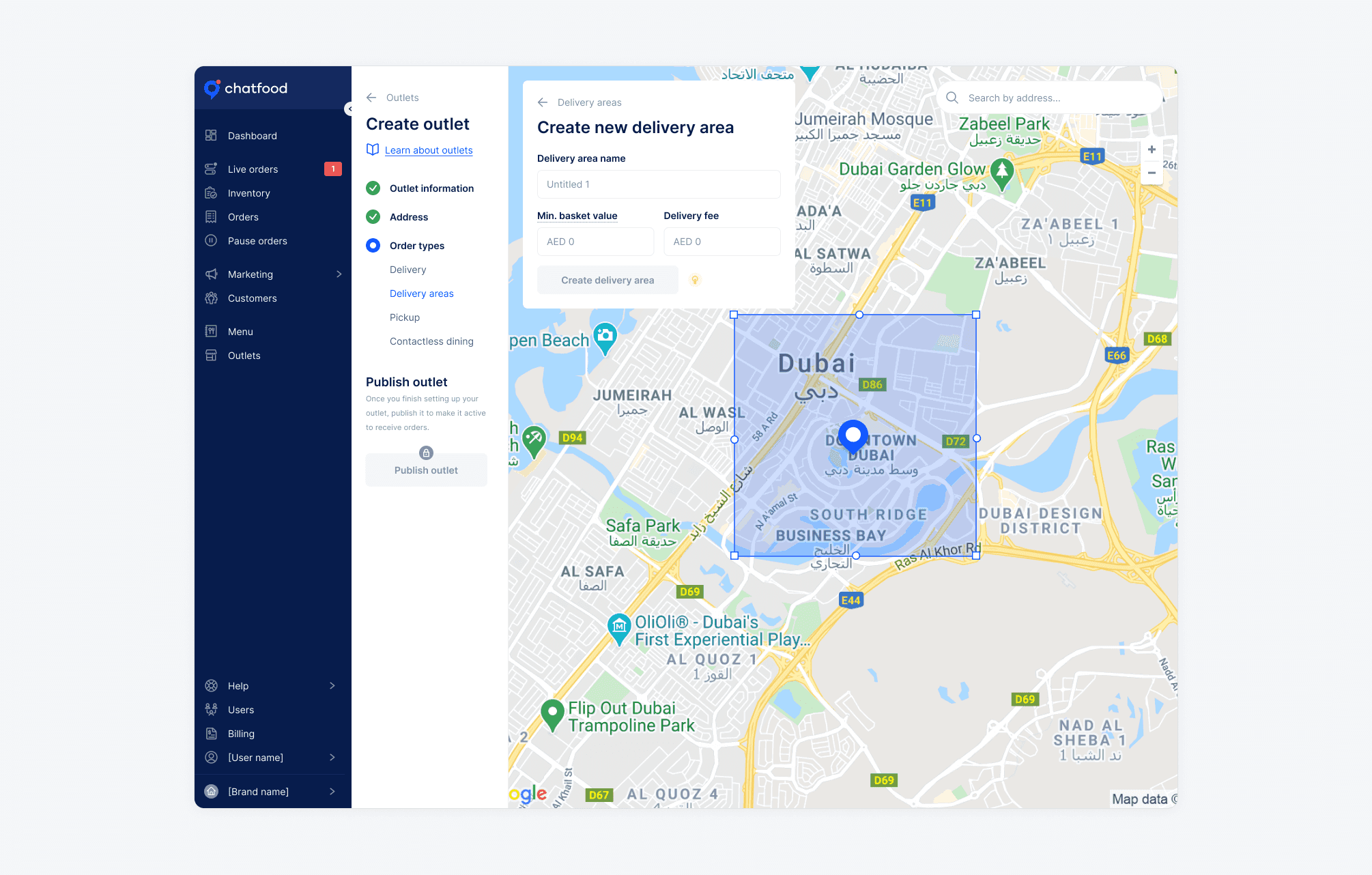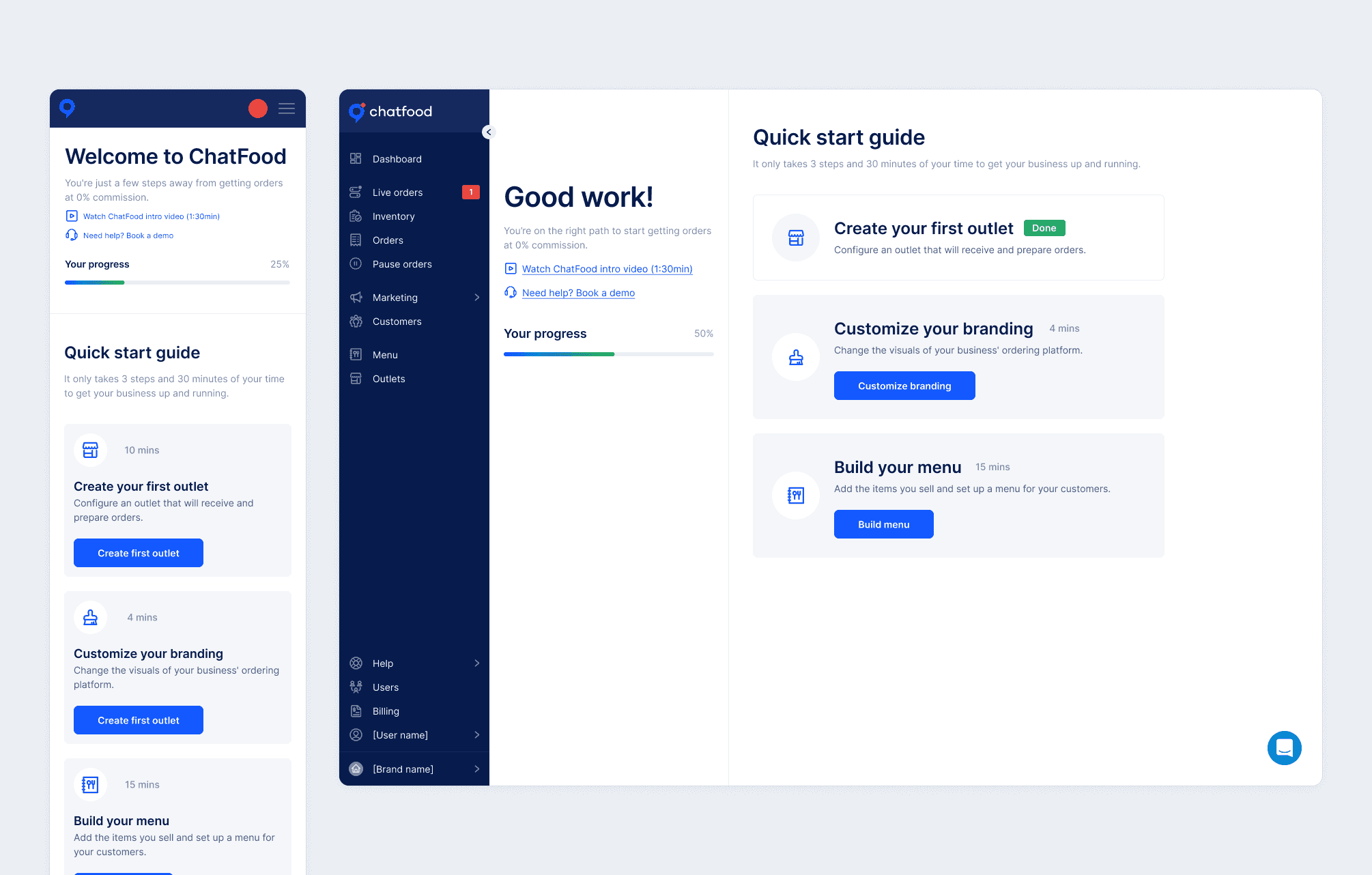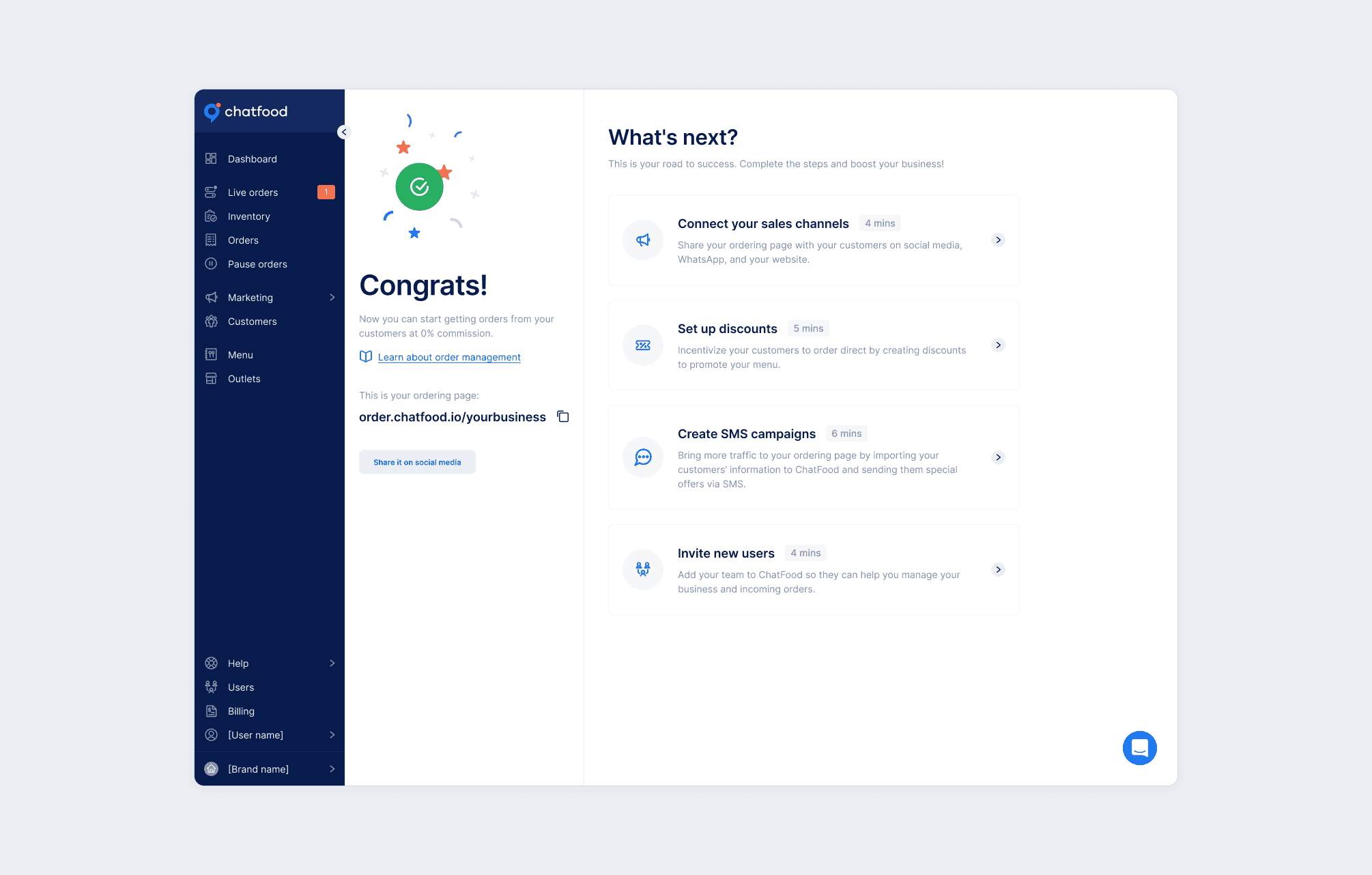ChatFood Onboarding
How to get restaurants to sell directly to customers as soon as possible.
Undoubtebly one of the most important startup KPI is the cost of customer acquisition. A number that every startup founder, product owner and product designer sweats over. A software as a service business needs to bring in good leads and convert them into — preferably long term — paying customers. The way UX can help, in conjucture with the rest of the product team, is to identify the reason the customer makes the switch, show the value of the product as soon as possible, sprinkle Aha moments throughout the experience and increase the product's stickiness.
I joined ChatFood a couple of months after the WHO has declared COVID-19 a global pandemic. The world was experiencing a forced transformation due to a one-in-a-century health crisis and one of the most affected sectors was hospitality. Millions of restaurants were faced with a decision to transform their business strategy to delivery first or wither into bankruptcy. Trying to flee (or at least hedge against) the predatory commissions of food delivery aggregators, many restaurant owners looked at selling directly to customers; this is where ChatFood comes in.
In May 2020, the company was experiencing an explosive growth and new customers were rushing in to set up a commission free quick commerce presence. We were doubling the number of customers month-over-month and despite the valiant effort the onboarding team was putting in, the process was very touch heavy and manual. The wait queue to get your restaurant online was about 4 to 6 weeks. We were in dire need to improve the onboarding process and experience. And we needed to do it fast.
The problem
When we started working on the onboarding problem, I was the sole designer in the company — in less then a year, we were five. Initially I had to split my time into research, ideation and designing the final deliverables. In time my role grew more towards coordinating the team rather than day-to-day design.
When the project started, we couldn't rely properly on quantitive data. It was either not set up properly, not available or limited; depends at what part of the system you're looking at. So, the main tool at our disposal was interviewing: the customers that needed onboarding, the staff that performed the manual onboarding tasks and shadowing the process to understand where the human intervention was the most critical.
After a couple dozen interviews we’ve mapped the onboarding activities into two axis: what items were critical for going live (the necessary axis) and what activities showed value to the customer (shows value axis).
The plan was straightforward:
Stage one
Build up the self-serving systems for the most time-consuming activities of our support team: discount creation, opening times, data export and import. This allowed the team to focus on onboarding rather than other support tasks.
Stage two
Build the rest of the tools, rethink the information architecture of the platform and provide a coherent onboarding path for new users.
While the first stage didn't have a lot challenges, stage two got us into a dillema. Should we build an onboarding guide or an onboarding map.
Solution A: Onboarding guide
A lot of tools rely on a wizard like process to take users through predefined steps to set up their account. The pros are that there is little room to get lost and it's clear for you what's next. The cons are that you don't get to experience the product or explore around until you've put a sigificant effort in and it can lead to process abandonment.
Solution B: Onboarding map
Maps help you navigate a new area, but they're not a replacement for a guide. The pros are that it's easy to set up a checklist, customers can dive right in and experience the tool just like their post-onboarding experience will be.The cons is that there is no concentrated effort of getting an account ready and one might be confused of the steps required.
After extensive user journey mapping, design exploration and user research, we've decided to go with Option B. In the usability tests conducted, the hypothesized concerns we had appeared less problematic and it was also the faster route to get onboarding to customers. The biggest drawback was measuring success of the user onboarding funnel — since the funnel is not linear it can hide a lot of unexpected problems.
We've identified in the previous steps the three main activities that a customer needs to acomplish before taking their store live: set up an outlet, create a menu, customize their branding. These three pillars of the onboarding were prominently displayed to the user in the first welcome screen. A clean, almost barren view of exactly what they needed to focus on and why.
After launch we monitored the support tickets and analytics and things seemed to be working as planned. Our customer success team was finally getting the reprieval they were waiting for.
Follow up
After we launched the onboarding, we kept analysing the overall performance the onboarding and one thing was off. While it automated the process and accounts seemed to be getting live just fine, they were not getting orders thus not converting to active accounts.
One major aspect of the human-assisted onboarding is that our team was also giving them guidance of what's next in the process: how to actually get orders. Our initial presumption that the onboarding is completed when a resturant is live was incorrect. A lot of accounts didn’t see value after the initial push and so they didn’t convert into paying customers. "What's next?" was a very common question for users.
Understanding this issue, made us creating what I call the “Road to success”. A page that has the role to educate customers on how to continue after going live and start getting orders.
Wrap up
As I am writing this in April 2021, we're far from done. After we shifted our definition of onboarding success to: an account is onboarded after they received their first order a world of possibilities opened for us to optimize the funnel. We have tons of ideas on how to get restaurants to start getting comission-free orders sooner, how to teach them how to get more customers and make sure both parties benefit. Because in the end, keeping this aspect of our culture alive is paramanout for us at ChatFood.




